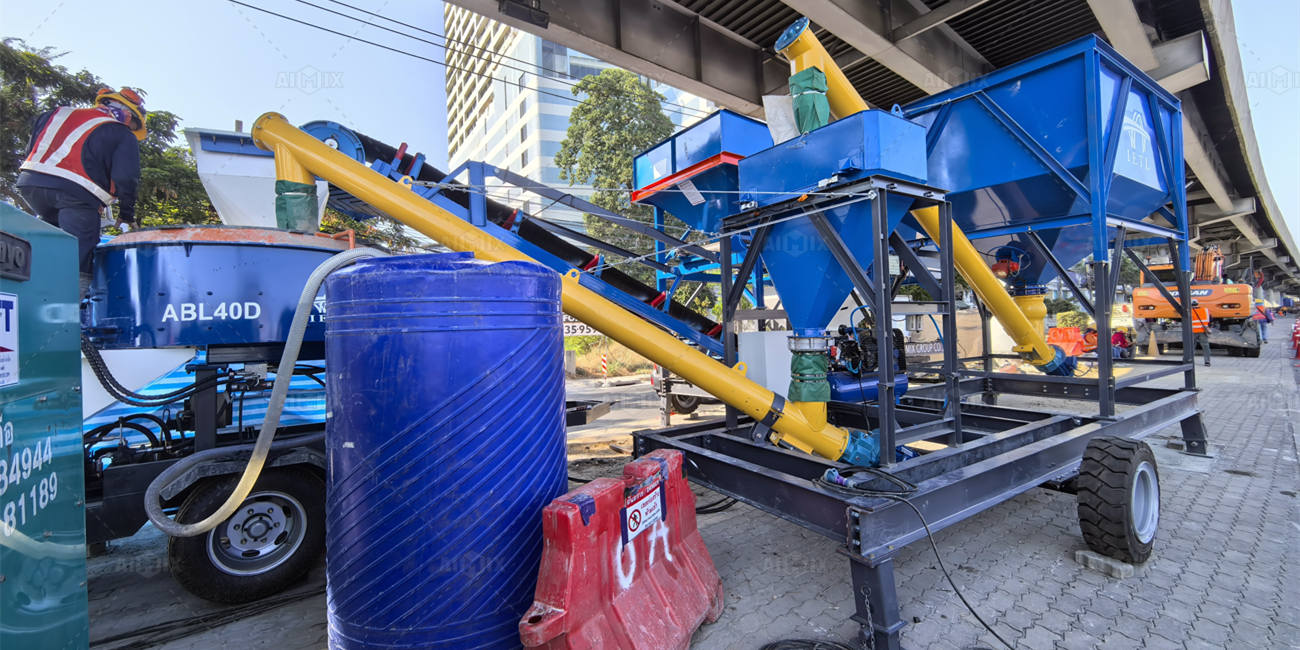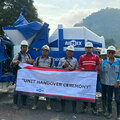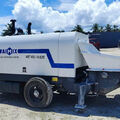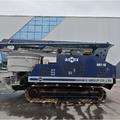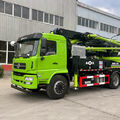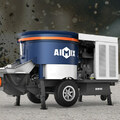Road destruction is a common issue faced by many countries, including Thailand, due to various factors such as heavy traffic, weather conditions, wear and tear, and natural disasters. In Thailand, where rapid urbanization and infrastructure development are crucial to support the growing population, road repair and maintenance are of utmost importance. One effective method of repairing road destruction is the use of concrete pumps. A concrete pump Thailand can significantly aid in the repair and restoration of damaged roads, ensuring long-lasting solutions to road infrastructure problems.

This article will explore how a concrete pump is used to repair road destruction in Thailand, including its benefits, the repair process, and best practices for efficient repairs.
Understanding the Role of Concrete Pumps in Road Repair
A concrete pump is a versatile piece of construction equipment used to transfer liquid concrete to different locations. The pump is especially useful in construction and road repair projects, where precision, speed, and efficiency are critical. Concrete pumps come in various types, including truck-mounted pumps, boom pumps, and stationary pumps, each serving different purposes depending on the project's requirements.
In road repair, concrete pumps are primarily used to transport and pour concrete into damaged sections of roads, particularly where it is difficult to access or pour concrete manually. The use of a concrete pump Thailand helps ensure a smooth and quick repair process with minimal disruption to traffic and local communities.
Why Concrete Pumps Are Essential for Road Repair in Thailand
There are several reasons why concrete pumps are becoming increasingly essential in road repair projects in Thailand:
Efficiency: Concrete pumps allow for the fast and precise delivery of concrete, which is especially useful in urban areas where road repairs need to be completed quickly to minimize disruptions. With a concrete pump, the construction crew can directly pump concrete into the required areas without the need for multiple laborers to transport the material manually.
Precision and Accuracy: Road repair requires precise concrete placement to ensure that the repaired road surface is even and durable. Concrete pumps enable workers to control the flow of the material, reducing the risk of uneven surfaces and increasing the quality of the finished repair.
Accessibility: In areas where road destruction has created hard-to-reach spots, such as narrow roads or deep cracks, a concrete pump can be a valuable tool. A concrete pump Thailand can easily maneuver to remote or restricted locations, making it easier to repair hard-to-reach road sections.
Cost-Effectiveness: Although the initial cost of hiring or purchasing a concrete pump might be higher, using one can reduce the overall costs of road repair by cutting down labor costs, reducing material wastage, and accelerating project completion times.
How Concrete Pumps Are Used for Road Repair
Concrete pumps play a critical role in repairing road destruction, ensuring that the repair is not only durable but also efficient. Below is a step-by-step process on how concrete pumps are used in road repair in Thailand:
Assessing the Damage
Before using a concrete pump Thailand, the first step is to assess the extent of the road damage. This involves inspecting cracks, potholes, uneven surfaces, and other forms of deterioration caused by environmental factors or heavy traffic. In many cases, road damage results from flooding, erosion, or the expansion and contraction of the ground.
Engineers and construction professionals will evaluate the type and severity of the damage to determine the type of concrete mix required for the repair. They will also assess whether a truck-mounted pump or a boom pump is more suitable for the task, depending on the location and accessibility of the damaged road sections.
Preparing the Area for Repair
Once the damage assessment is complete, the next step is to prepare the damaged area for concrete pouring. This includes cleaning the damaged sections of the road, removing debris, and ensuring that the surface is dry and ready to accept the new concrete. Any loose materials or old concrete should be removed before the new concrete is applied.
In some cases, additional preparation may be necessary, such as reinforcing the damaged road section with steel bars or mesh to improve the strength and durability of the repair.
Mixing the Concrete
The next step involves mixing the concrete to be used for the repair. The concrete mix typically consists of cement, water, aggregates (sand, gravel, or crushed stone), and, in some cases, additives or reinforcements. The specific mix will depend on the type of road and the expected load-bearing requirements.
For large-scale road repair projects, ready-mix concrete is often used, which can be pumped directly from the mixing plant to the damaged road section via the concrete pump Thailand. The concrete is mixed at the plant to ensure consistency and quality, allowing the construction team to maintain high standards in their work.
Using the Concrete Pump
Once the concrete is ready, the concrete pump is used to transport the material to the damaged road section. The pump will efficiently move the concrete through hoses and boom systems to the targeted area, where it will be poured into the cracks or potholes.
Truck-mounted Concrete Pumps: These pumps are often used when the repair area is accessible via the road itself. The truck-mounted pump is positioned close to the repair site, and concrete is delivered directly into the required areas.
Boom Pumps: If the damaged section is far from the truck or in an area with difficult access, a boom pump with an extendable arm can be used to precisely place the concrete into the right locations, even in areas that would be hard to reach manually.
Finishing the Repair
Once the concrete has been poured, the final step is to smooth and finish the road surface. This step includes leveling the concrete, ensuring an even surface, and applying any required finishing touches such as texturing to prevent slipping or applying sealants for waterproofing.
After the concrete is set, traffic can be redirected, and the road can be reopened once the repair has cured properly. This process can take anywhere from a few hours to a few days, depending on the size of the repair and weather conditions.
Best Practices for Efficient Road Repair Using Concrete Pumps in Thailand
To ensure the success of road repair projects using concrete pumps in Thailand, there are several best practices that construction teams should follow:
Regular Maintenance of Concrete Pumps: Regular maintenance of the concrete pump is essential to ensure its optimal performance. Routine checks for wear and tear, cleaning the hoses, and inspecting hydraulic systems can help avoid delays and issues during the repair process.
Proper Mix Design: Using the right concrete mix is crucial to ensuring that the repair is durable. A well-designed mix will ensure that the repaired section of the road is strong, resistant to weather conditions, and able to handle heavy traffic loads.
Monitoring Curing Conditions: Concrete curing is a critical process that directly affects the strength of the repaired road. In Thailand’s tropical climate, it is important to control the temperature and moisture during curing to prevent cracks and ensure the long-lasting durability of the repair.
Project Planning and Coordination: Since traffic disruptions can be a significant concern in urban areas, it is essential to plan the repair process efficiently. Working during off-peak hours, using efficient equipment like concrete pumps, and coordinating with local authorities for road closures can minimize traffic issues and reduce downtime.
Road destruction is an ongoing challenge in Thailand, particularly in rapidly growing urban areas. However, with the use of concrete pumps, road repair projects can be carried out more efficiently and effectively. Concrete pumps, especially when combined with the right preparation and technique, allow for quick and accurate repairs, which not only restore roads but also improve safety, reduce traffic disruptions, and enhance the overall quality of road infrastructure.
By leveraging the benefits of concrete pump Thailand, construction teams can provide long-lasting solutions to road destruction, contributing to Thailand’s ongoing infrastructure development and urbanization efforts.
